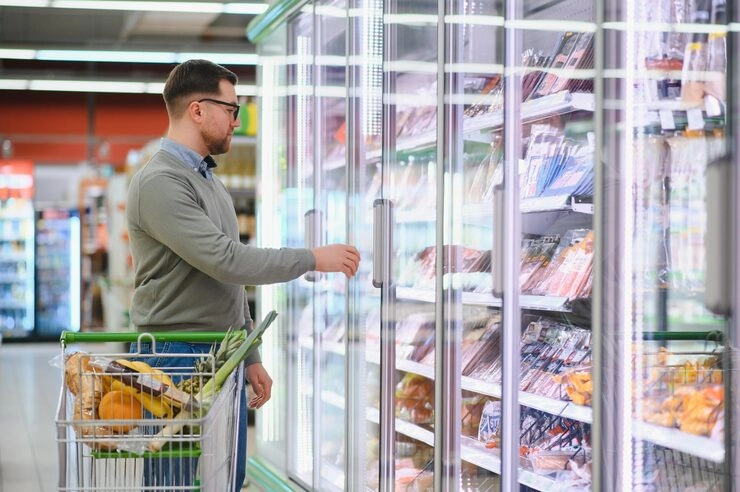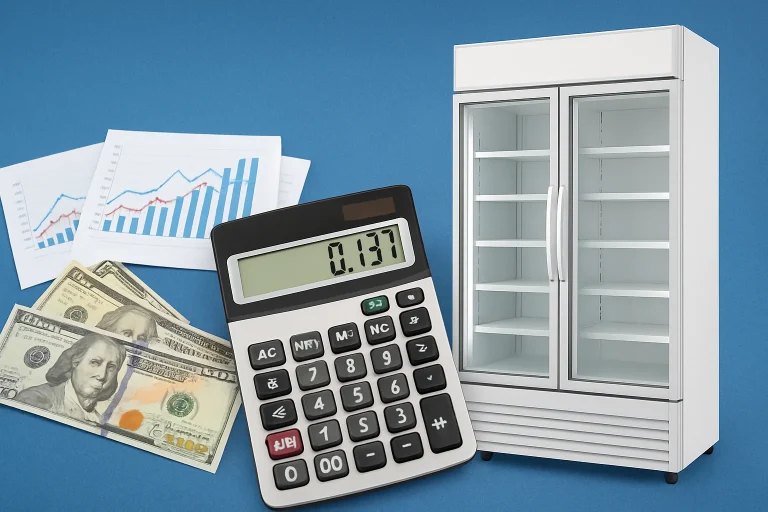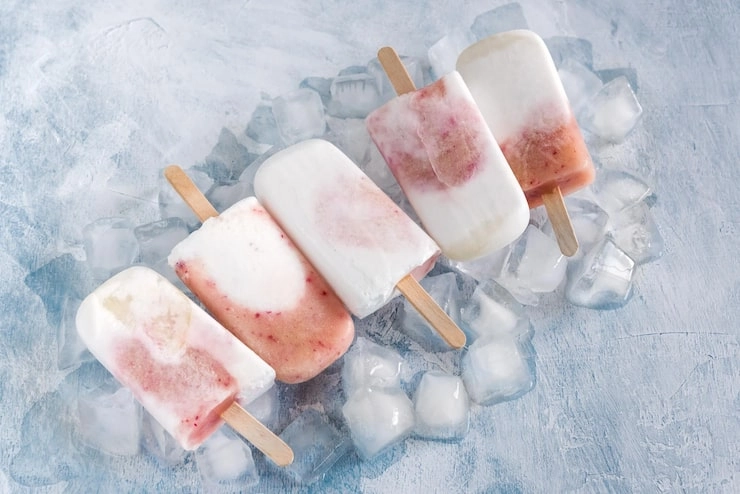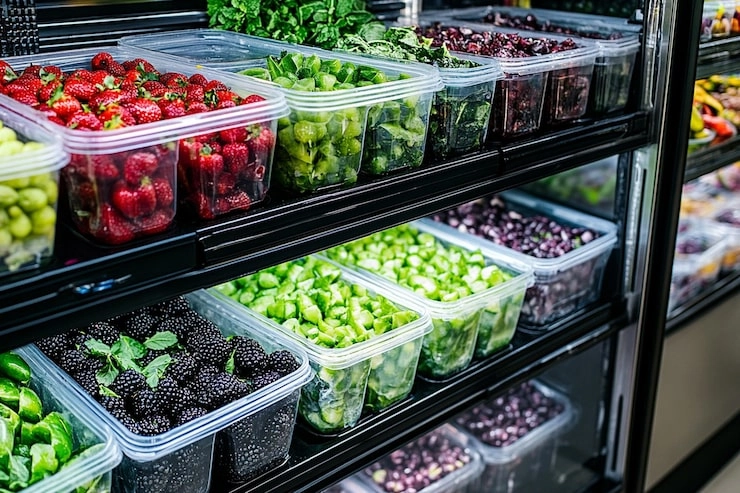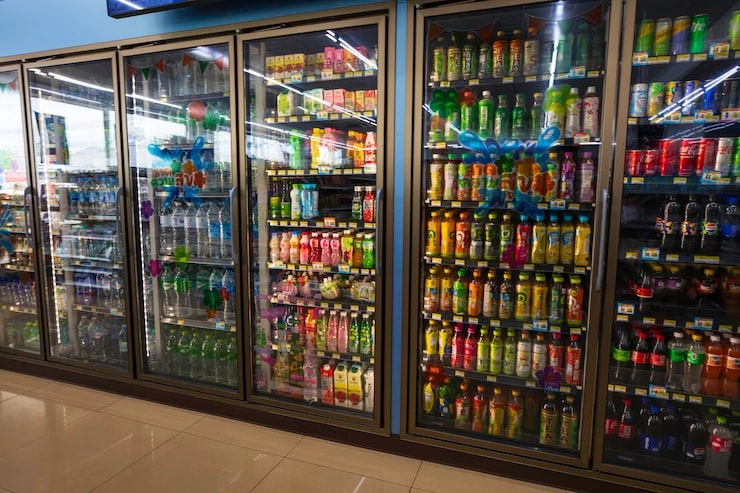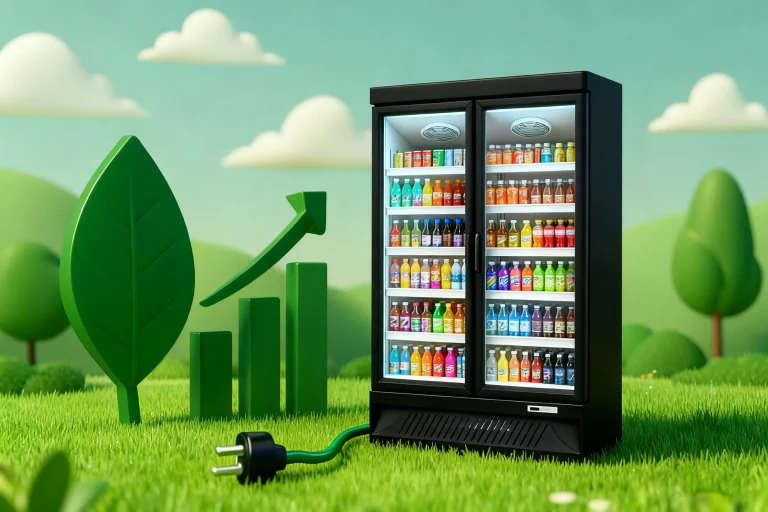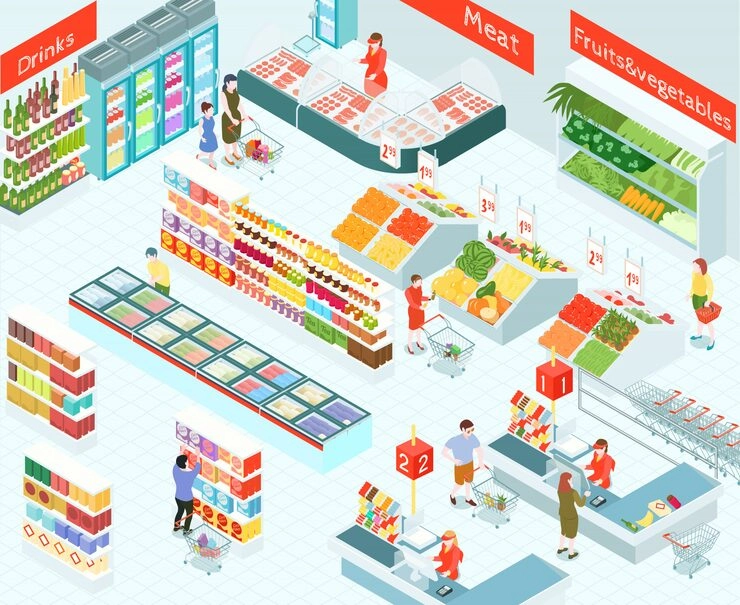Operating a supermarket in the United States has never been tougher. There’s more to it than just staffing, shipping, and supply chain problems. One expense, in particular, really hurts the budget: refrigeration.
This single cost makes up a huge chunk of a grocery store’s power bill, about 40–60%. On top of that, there are growing rules from the Environmental Protection Agency (EPA) about refrigerants. Stores also face tougher certification standards. Plus, they have to make sure products are displayed safely and look good to shoppers. It’s obvious that old-fashioned cooling systems just don’t cut it anymore.
But the good news is, there’s a better way. Help is on the way. New technologies, green refrigerants, and ready-to-go cooling solutions are now available. These innovations are here to help American grocery stores save money, follow the rules, and make customers happier.
Rising Energy Bills in U.S. Supermarkets
First of all, a big hurdle for supermarkets is how much energy they use. Old cooling units have dated compressors. Their insulation is poor. Because of this, they use way more power than newer models.
Industry studies show that stores can slash their yearly power costs by as much as 50%. How? By upgrading to energy-smart refrigeration.
For instance, modern commercial fridges use inverter compressors. These clever devices change their speed based on how much cooling is needed. This stops them from always running at full blast and wasting power.
What’s more, LED lights and better foam insulation cut down on both heat and wasted energy.
Create Refrigeration’s Solution
Create Refrigeration includes top-level inverter compressors in its entire product line, giving grocery stores a big drop in their utility bills. Paired with LED lighting, double-glass self-closing doors, and a fine-tuned airflow design, Create refrigerators are engineered for top cooling performance with the least amount of energy waste.
Compliance Pressure: Refrigerants and Certifications
Next, stores have to deal with following environmental rules. The EPA is cutting back on HFC refrigerants, which have a high-GWP. This move is encouraging the industry to use natural options with a low GWP instead. By 2036, the use of HFCs in America is set to drop by 85%.
So, what does this mean for store owners? They must replace their old systems that rely on these outdated refrigerants. If they don’t, they could face big fines and more expensive repairs down the road.
Create Refrigeration’s Solution
Over 80% of Create Refrigeration’s products run on R290. This is a natural refrigerant with a very low Global Warming Potential (GWP) of only 3.
This feature makes Create refrigerators fully compliant with EPA rules and ready for future U.S. regulations.
All products have internationally accepted certifications like UL, ETL, CE, CB, ISO, and ROHS. This ensures they meet both American safety and green standards.
Food Safety and Customer Experience
Beyond power bills and regulations, grocery stores also need to consider food safety and how they present their products. A badly designed refrigeration unit can lead to temperature swings, condensation, and uneven cooling. All of these issues can spoil food faster and hurt a store’s reputation.
Shoppers want to see products that look fresh and inviting. This requires both steady cooling and a smart display.
Create Refrigeration’s Solution
- Glass Door Display Freezers: These are perfect for frozen foods and drinks. They have anti-condensation double glass, bright LED lights, and provide even cooling.
- Multideck Open Chillers (Air Curtain Cabinets): Great for fruits, dairy, and grab-and-go meals. A double air curtain design cuts down on energy loss, and it keeps products easy to see and reach.
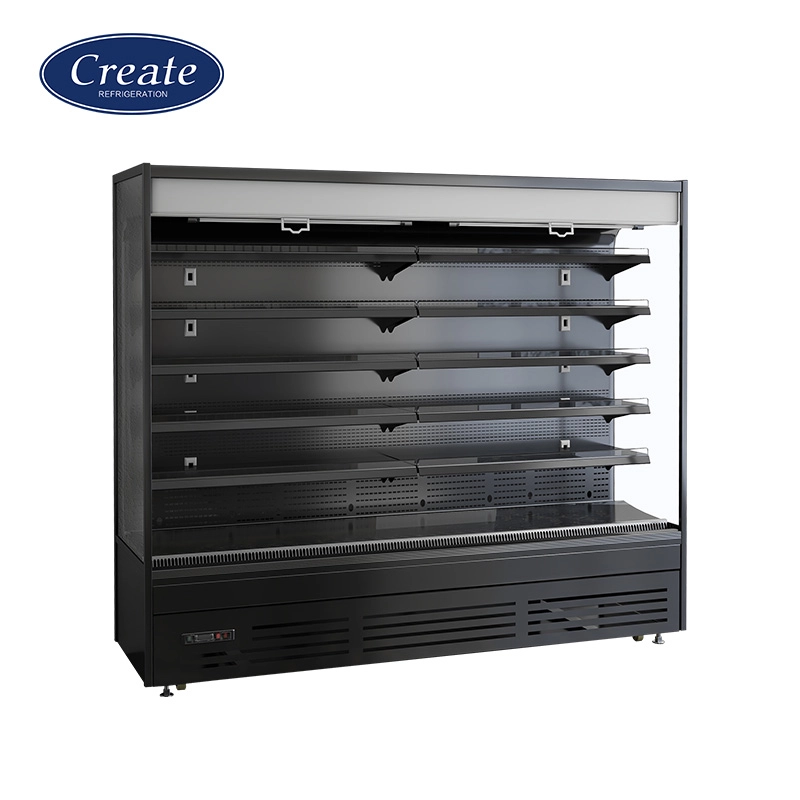
- Meat and Deli Display Cases: Special airflow systems keep meat looking colorful and fresh, while the stainless steel build makes them easy to clean.
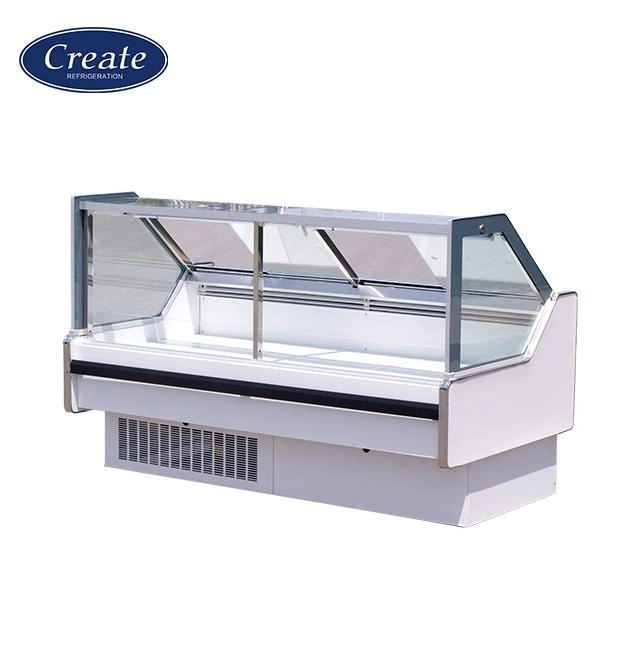
- Island Freezers: These are flexible and can be moved around, making them great for special promotions or large frozen items.
These units do more than just keep food fresh; they also help boost sales by making the products look better to shoppers.
Space Utilization in Supermarket Backrooms
An issue that’s less obvious—but just as critical—is cold storage in the back. Walk-in coolers and freezers that are not well-planned can take up too much room, use a ton of energy, and make daily work harder.
Create Refrigeration’s Solution
The company provides custom walk-in coolers and freezers made specifically for grocery stores.
It also offers free CAD design and 3D modeling services when you buy their products. This service helps supermarkets figure out the best layout before anything is installed.
They use strong, energy-saving materials with UL-certified parts to make sure everything works well for a long time.
This design-focused method helps grocery stores get the most out of their backroom space while keeping their running costs down.
Short-Term Costs vs. Long-Term ROI
A common concern for many grocery store owners is the initial price of buying new refrigeration systems. But the return on investment (ROI) is very convincing:
Inverter compressor technology by itself can lower energy use by up to 50% each year. It often pays for itself in just two to three years.
Maintenance costs are also lower. This is because of the better design, modern monitoring systems, and dependable parts.
Using eco-friendly refrigerants also protects businesses from future regulatory problems.
Real-World Case Studies
A convenience store in Bahrain used Create’s air curtain cabinets. The team also benefited from a 3D layout design before they even placed their order.
In Riyadh, a supermarket picked Create’s energy-saving island freezers. This choice helped them secure future savings, even though the initial cost was higher.
A store owner in Manila updated an old location using Create’s modular refrigerators and an optimized CAD floor plan. The result? He signed a long-term supply deal.
These stories from around the world show that energy-efficient supermarket refrigeration isn’t just a green choice—it’s a smart business move.
Why Choose Create Refrigeration for U.S. Grocery Stores
With more than 16 years in the business, 12 subsidiary companies, and a 360,000 m² factory, Create Refrigeration stands as a top global provider of all-in-one supermarket refrigeration solutions.
Main benefits for U.S. grocery stores:
International certifications (UL, ETL, CE, ISO) to ensure compliance.
A complete product lineup: multideck chillers, glass door freezers, deli cases, island freezers, and walk-in coolers.
OEM/ODM customization available for distributors and supermarket chains.
Free CAD & 3D design services along with full project support.
Demonstrated energy savings and ROI shown in global case studies.
FAQs
Q1: Are Create Refrigeration supermarket display cases Energy Star certified?
A: Yes. Create products are designed to meet global energy efficiency standards and will lower your electricity bills in a big way. Their certifications include UL, ETL, CE, ISO, and others.
Q2: Can I get a custom supermarket refrigeration layout with CAD design?
A: Of course. Create offers free CAD-based design and 3D modeling for supermarkets. This helps you get the perfect layout before installation.
Q3: How much can supermarkets save annually with energy-efficient refrigeration systems?
A: By switching to inverter compressor technology and R290-based systems, U.S. grocery stores can cut their electricity costs by up to 50%. Most stores see a return on their investment in about two to three years.

